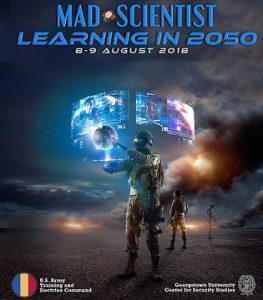 On 8-9 August 2018, the U.S. Army Training and Doctrine Command (TRADOC) co-hosted the Learning in 2050 Conference with Georgetown University’s Center for Security Studies in Washington, DC. Leading scientists, innovators, and scholars from academia, industry, and the government gathered to address future learning techniques and technologies that are critical in preparing for Army operations in the mid-21st century against adversaries in rapidly evolving battlespaces. The new and innovative learning capabilities addressed at this conference will enable our Soldiers and Leaders to act quickly and decisively in a changing Operational Environment (OE) with fleeting windows of opportunity and more advanced and lethal technologies.
On 8-9 August 2018, the U.S. Army Training and Doctrine Command (TRADOC) co-hosted the Learning in 2050 Conference with Georgetown University’s Center for Security Studies in Washington, DC. Leading scientists, innovators, and scholars from academia, industry, and the government gathered to address future learning techniques and technologies that are critical in preparing for Army operations in the mid-21st century against adversaries in rapidly evolving battlespaces. The new and innovative learning capabilities addressed at this conference will enable our Soldiers and Leaders to act quickly and decisively in a changing Operational Environment (OE) with fleeting windows of opportunity and more advanced and lethal technologies.
We have identified the following “Top 10” takeaways related to Learning in 2050:
1. Many learning technologies built around commercial products are available today (Amazon Alexa, Smart Phones, Immersion tech, Avatar experts) for introduction into our training and educational institutions. Many of these 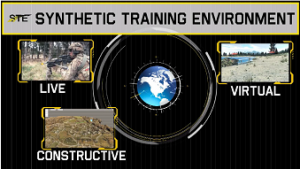 technologies are part of the Army’s concept for a Synthetic Training Environment (STE) and there are nascent manifestations already. For these technologies to be widely available to the future Army, the Army of today must be prepared to address:
technologies are part of the Army’s concept for a Synthetic Training Environment (STE) and there are nascent manifestations already. For these technologies to be widely available to the future Army, the Army of today must be prepared to address:
– The collection and exploitation of as much data as possible;
– The policy concerns with security and privacy;
– The cultural challenges associated with changing the dynamic between learners and instructors, teachers, and coaches; and
– The adequate funding to produce capabilities at scale so that digital tutors or other technologies (Augmented Reality [AR] / Virtual Reality [VR], etc.) and skills required in a dynamic future, like critical thinking/group think mitigation, are widely available or perhaps ubiquitous.
 2. Personalization and individualization of learning in the future will be paramount, and some training that today takes place in physical schools will be more the exception, with learning occurring at the point of need. This transformation will not be limited to lesson plans or even just learning styles:
2. Personalization and individualization of learning in the future will be paramount, and some training that today takes place in physical schools will be more the exception, with learning occurring at the point of need. This transformation will not be limited to lesson plans or even just learning styles:
– Intelligent tutors, Artificial Intelligence (AI)-driven instruction, and targeted mentoring/tutoring;
– Tailored timing and pacing of learning (when, where, and for what duration best suits the individual learner or group of learners?);
– Collaborative learners will be teams partnering to learn;
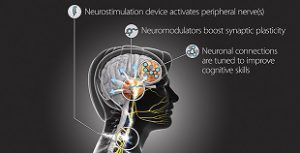
– Various media and technologies that enable enhanced or accelerated learning (Targeted Neuroplasticity Training (TNT), haptic sensors, AR/VR, lifelong personal digital learning partners, pharmaceuticals, etc.) at scale;
– Project-oriented learning; when today’s high school students are building apps, they are asked “What positive change do you want to have?” One example is an open table for Bully Free Tables. In the future, learners will learn through working on projects;
– Project-oriented learning will lead to a convergence of learning and operations, creating a chicken (learning) or the egg (mission/project) relationship; and
– Learning must be adapted to consciously address the desired, or extant, culture.
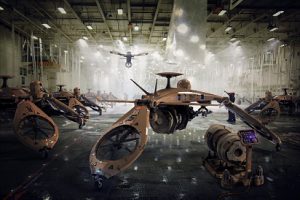
3. Some jobs and skill sets have not even been articulated yet. Hobbies and recreational activities engaged in by kids and enthusiasts today could become occupations or Military Occupational Specialties (MOS’s) of the future (e.g., drone creator/maintainer, 3-D printing specialist, digital and cyber fortification construction engineer — think Minecraft and Fortnite with real-world physical implications). Some emerging trends in personalized warfare, big data, and virtual nations could bring about the necessity for more specialists that don’t currently exist (e.g., data protection and/or data erasure specialists).

4. The New Human (who will be born in 2032 and is the recruit of 2050) will be fundamentally different from the Old Human. The Chief of Staff of the Army (CSA) in 2050 is currently a young Captain in our Army today. While we are arguably cyborgs today (with integrated electronics in our pockets and on our wrists), the New Humans will likely be cyborgs in the truest sense of the word, with some having embedded sensors. How will those New Humans learn? What will they need to learn? Why would they want to learn something? These are all critical questions the Army will continue to ask over the next several decades.
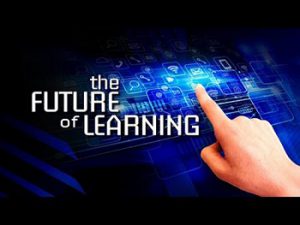
5. Learning is continuous and self-initiated, while education is a point in time and is “done to you” by someone else. Learning may result in a certificate or degree – similar to education – or can lead to the foundations of a skill or a deeper understanding of operations and activity. How will organizations quantify learning in the future? Will degrees or even certifications still be the benchmark for talent and capability?
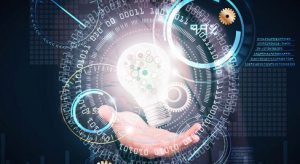
6. Learning isn’t slowing down, it’s speeding up. More and more things are becoming instantaneous and humans have no concept of extreme speed. Tesla cars have the ability to update software, with owners getting into a veritably different car each day. What happens to our Soldiers when military vehicles change much more iteratively? This may force a paradigm shift wherein learning means tightening local and global connections (tough to do considering government/military network securities, firewalls, vulnerabilities, and constraints); viewing technology as extended brains all networked together (similar to Dr. Alexander Kott’s look at the Internet of Battlefield Things [IoBT]); and leveraging these capabilities to enable Soldier learning at extremely high speeds.
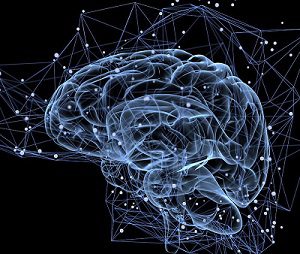
7. While there are a number of emerging concepts and technologies to improve and accelerate learning (TNT, extended reality, personalized learning models, and intelligent tutors), the focus, training stimuli, data sets, and desired outcomes all have to be properly tuned and aligned or the Learner could end up losing correct behavior habits (developing maladaptive plasticity), developing incorrect or skewed behaviors (per the desired capability), or assuming inert cognitive biases.

8. Geolocation may become increasingly less important when it comes to learning in the future. If Apple required users to go to Silicon Valley to get trained on an iPhone, they would be exponentially less successful. But this is how the Army currently trains. The ubiquity of connectivity, the growth of the Internet of Things (and eventually Internet of Everything), the introduction of universal interfaces (think one XBOX controller capable of controlling 10 different types of vehicles), major advances in modeling and simulations, and social media innovation all converge to minimize the importance of teachers, students, mentors, and learners being collocated at the same physical location.
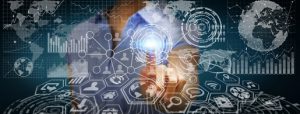
9. Significant questions have to be asked regarding the specificity of training in children at a young age to the point that we may be overemphasizing STEM from an early age and not helping them learn across a wider spectrum. We need Transdisciplinarity in the coming generations.
10. 3-D reconstructions of bases, training areas, cities, and military objectives coupled with mixed reality, haptic sensing, and intuitive controls have the potential to dramatically change how Soldiers train and learn when it comes to not only single performance tasks (e.g., marksmanship, vehicle driving, reconnaissance, etc.) but also in dense urban operations, multi-unit maneuver, and command and control.

During the next two weeks, we will be posting the videos from each of the Learning in 2050 Conference presentations on the TRADOC G-2 Operational Environment (OE) Enterprise YouTube Channel and the associated slides on our Mad Scientist APAN site — stay connected here at the Mad Scientist Laboratory.
One of the main thrusts in the Mad Scientist lines of effort is harnessing and cultivating the Intellect of the Nation. In this vein, we are asking Learning in 2050 Conference participants (both in person and online) to share their ideas on the presentations and topic. Please consider:
– What topics were most important to you personally and professionally?
– What were your main takeaways from the event?
– What topics did you want the speakers to extrapolate more on?
– What were the implications for your given occupation/career field from the findings of the event?
Your input will be of critical importance to our analysis and products that will have significant impact on the future of the force in design, structuring, planning, and training! Please submit your input to Mad Scientist at: usarmy.jble.tradoc.mbx.army-mad-scientist@mail.mil.




Great synopsis of a brilliant conference that bridged from today out to learning after next. One often overlooked component of the many the initiatives cited is the need for a digital architecture needed to store and deliver capabilities. Will virtual tutors reside in a device, on a cloud or maybe in a completely different ubiquituous data environment? How will learning at the point of need be delivered? With so many knowledge technologies we need to consider several components: the data, the algorithms / software, the architecture, varied applicable the use cases, and the ever changing capacities of the users. .
At some point, it should be possible to directly connect a human brain with electronics such that information can be transmitted back and forth – we’ve already taken the first steps in that, as presented. If this is indeed possible, and is achieved, there are several questions relevant to “Learning in 2050.” One question is: what is the capacity of the human brain to receive information via this method? In one sense, human brains think very slowly compared to computational powers of even current systems. In another sense, human brains think differently than digital processors (highly parallel, rather than serial). Even so, if “bandwidth” issues can be overcome, it could be possible for humans to learn highly complex, data-rich concepts in near-real time. This also brings up the question of direct human-brain to human-brain communication. Why would anyone need to learn something new if someone or something in the interconnected system already knows it and can instantly relay what’s needed to those that need it? This also generates significant questions about the nature of “privacy”. If everyone is connected, will there even be a need for a warfighter?
No way the Army can train via the Internet of Everything. Since they limit the access via locking down sites on military computers, like for instance blocking a Soldier from accessing even .gov, .mil, and federal sites.
The failure for the DoD to standardize the systems and their accessibility needs to be fixed before we can even think about Mad Scientist Land.